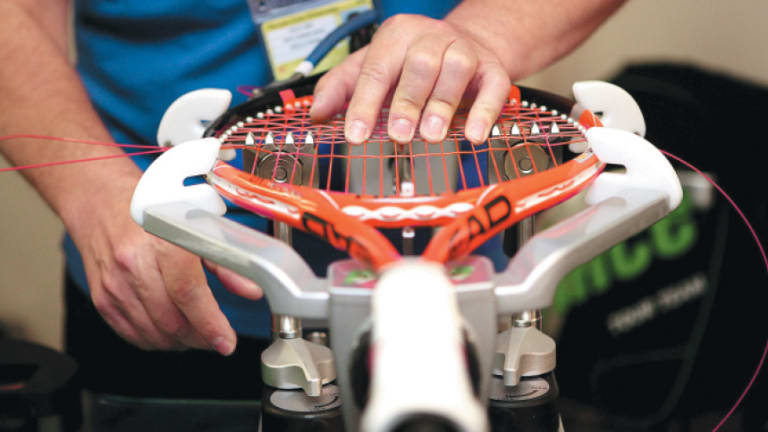Once a blip on the racquet-spec radar, string pattern has become an increasingly important—and complicated—consideration. Here are a few things you should know about strings before your next racquet purchase.
It used to be that when a racquet had 16 main strings (the ones that go up and down) and 18 or 19 crosses, that was considered an open string pattern. While that still holds true to an extent, more extreme configurations now exist—16 × 16; even 16 × 15—that have changed the meaning of “open.”
If you have two similarly sized frames with identical strings and tensions, the racquet with the more open string pattern will usually have a softer, arm-friendlier response. More strings in the string bed makes the frame stiffer and provides a firmer response. For players who play with lots of touch and precision, the extra feedback provided by racquets with 16 × 20 and 18 × 20 configurations can actually be preferable.
The more space between the strings, the greater the opportunity to bite the ball. Hence, a more open pattern can accentuate spin. A player using a dense pattern can still apply spin to the ball, just not as easily or severely. On the upside, the extra surface area and stiffer string bed generally provide better directional control. Strings shift with greater frequency in an open pattern, which can allow the ball to slide more at impact, hampering accuracy. Shots have better reliability with less movement and flex in the string bed.
Every time you hit a ball, your strings move. When strings move, they rub against each other, causing them to weaken and eventually snap. The greater the room to move—the more open the string pattern—the higher the frequency of breakage. That’s why players generally need to use a thicker, more durable gauge string with overly spin-friendly, open patterns. Players using a dense string pattern don’t have to worry about this as much. It also affords them the opportunity to use softer and thinner strings, which would break much faster in a frame with an open string pattern.
